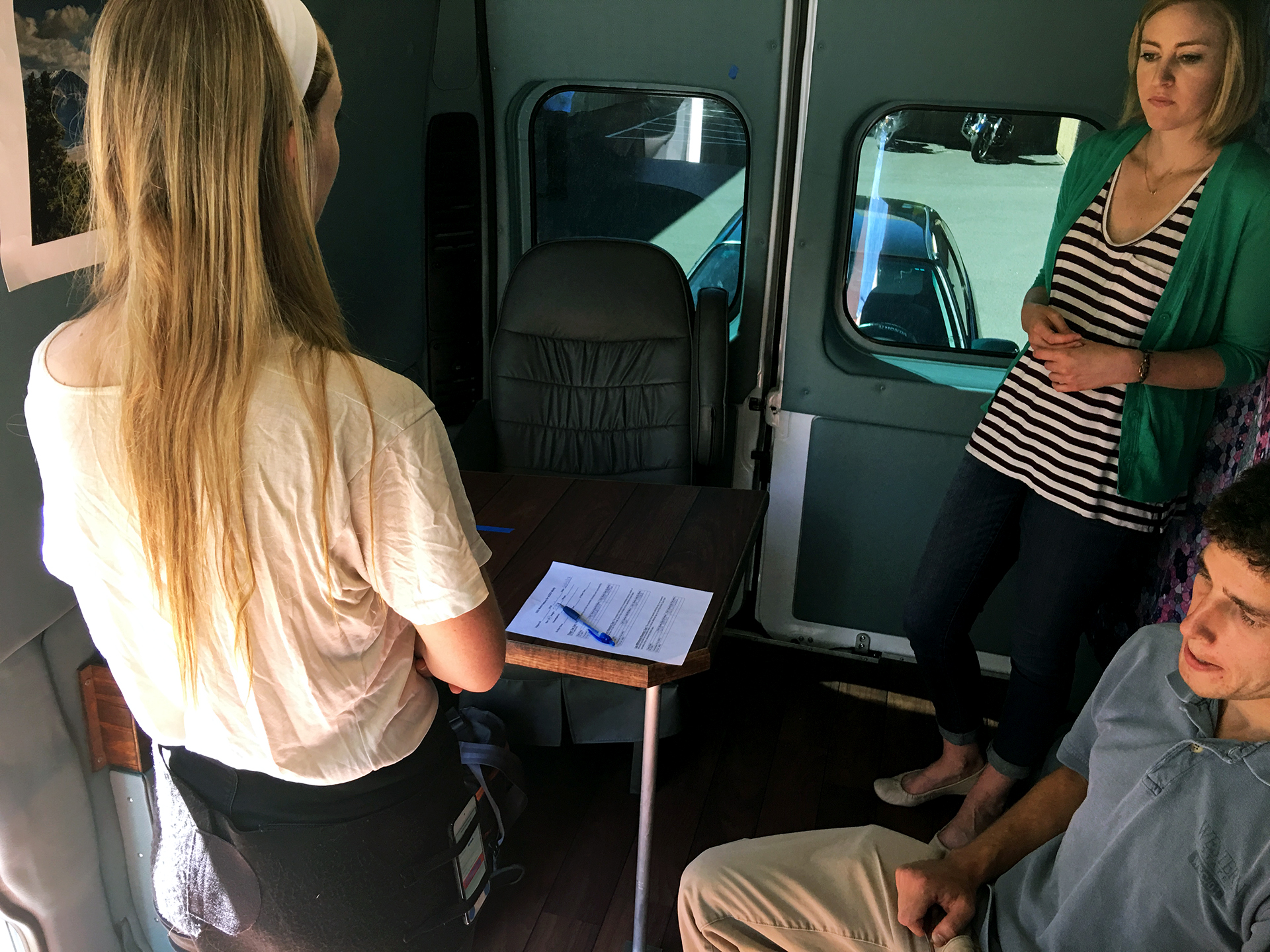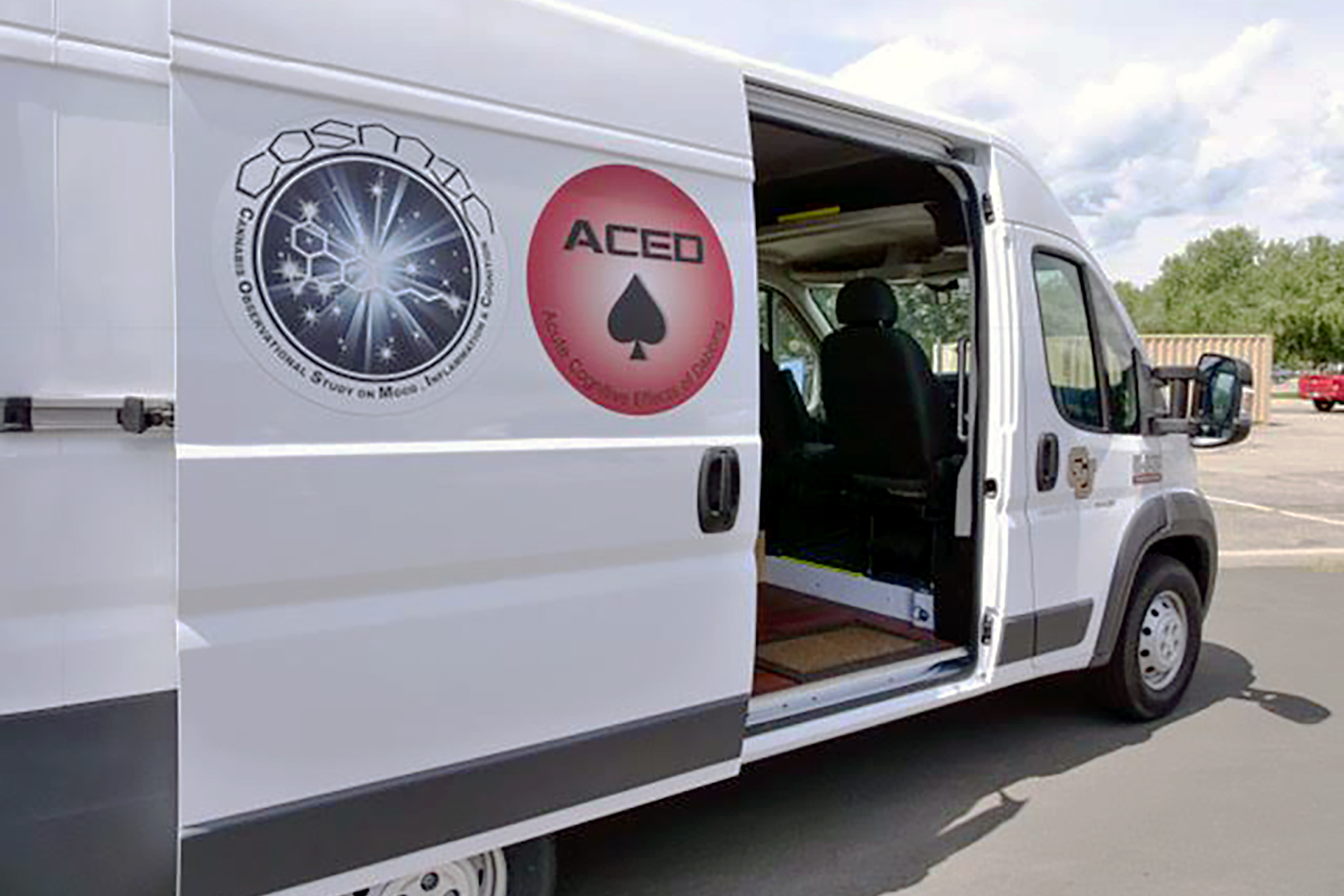
The Rocky Mountain Showdown football rivalry does not mean the two universities do not collaborate on research, and a series of studies by Colorado State University and CU-Boulder points to an inexpensive and effective tool to study balance.
CSU Associate Professor Brian Tracy and former student Dana Lervick (B.S. health and exercise science, ’23) worked with CU-Boulder researchers to study cannabis’ physiological, behavioral and cognitive effects before and after consuming the drug.
The so-called CannaVan has garnered national attention, as has research about how marijuana affects drivers. One of many factors the CU-Boulder researchers measure is participants’ balance before and after ingesting cannabis.
The start of a partnership
The measuring tool is a iPod Touch loaded with an app that can measure even the slightest movement in any direction. It has been used for years by Tracy, who studies neuromuscular function in CSU’s Human Performance Clinical Research Laboratory in the Department of Health and Exercise Science.
“It was kind of a neat thing because I had developed this technology of using smartphones for this purpose,” Tracy said. “Then a professor from CU, Kent Hutchison, came up and gave a talk in our department and he started talking about this work that they were going to do in this van.”
Tracy said an idea hit him right away, years before Lervick would crunch data to find patterns.
“And I am sitting in the audience going, ‘Wow,’ I think that would be a neat application of this idea I’ve developed,” he said. “I walked right up to him and had a conversation with him. Long story short, we have done several studies.”

CSU student publishes poster
A 2020 study published in the Journal of the American Medical Association Psychiatry confirmed the usefulness of the iPod Touch, as discussed in a 2017 story about the tool.
Lervick took the data from the next study to focus on assessing smartphone-type devices as an instrument to acquire quantitative measures of the Clinical Test for Sensory Integration and Balance in a remote research setting (the CannaVan). Lervick’s poster earned top honors for undergraduate research and creativity in the College of Health and Human Sciences.
Lervick used the data CU collected, digitized the signals from the triaxial accelerometer sensors and recorded user acceleration in the X and Z axes for later analysis of postural sway.
“After obtaining the files, I converted them into a different form and imported them into analysis software,” Lervick said. “After distinguishing each condition of the test, I selected a consistent portion of data to analyze.”
Lervick said her results showed that as the subjects performed the balance test, postural stability worsened as the difficulty increased across conditions. “The results of my study indicate that smartphone devices can provide a feasible way to accurately and quantitatively measure postural stability during the modified test in remote settings,” she said.

Future study, uses
Tracy has collaborated on other studies with CU-Boulder researchers Cinnamon Bidwell and Angela Bryan, and he has an eye on the future beyond the van research.
Falls are the leading cause of injury and death among people ages 65 and older, according to cdc.gov. And while Tracy said smartphones might not be readily useful by the lay person at this moment to measure their own balance, the data from the device can be analyzed in the lab.
“One of the goals is to create an app in the future to allow individuals to do that kind of thing on their own,” Tracy said. “We’ve done movement studies on older adults, Parkinson’s patients and young people testing the device to measure physical function.”
Lervick said she may be able to use the technology to help people directly: “My goal is to one day work in an orthopedic rehabilitation setting, using my knowledge of health and exercise science, sports medicine, neuroscience balance research and, most importantly, physical therapy to help others move to the best of their abilities and live their lives to optimum potential.”
The Human Performance Clinical Research Lab and the Department of Health and Exercise Science are part of CSU’s College of Health and Human Sciences.